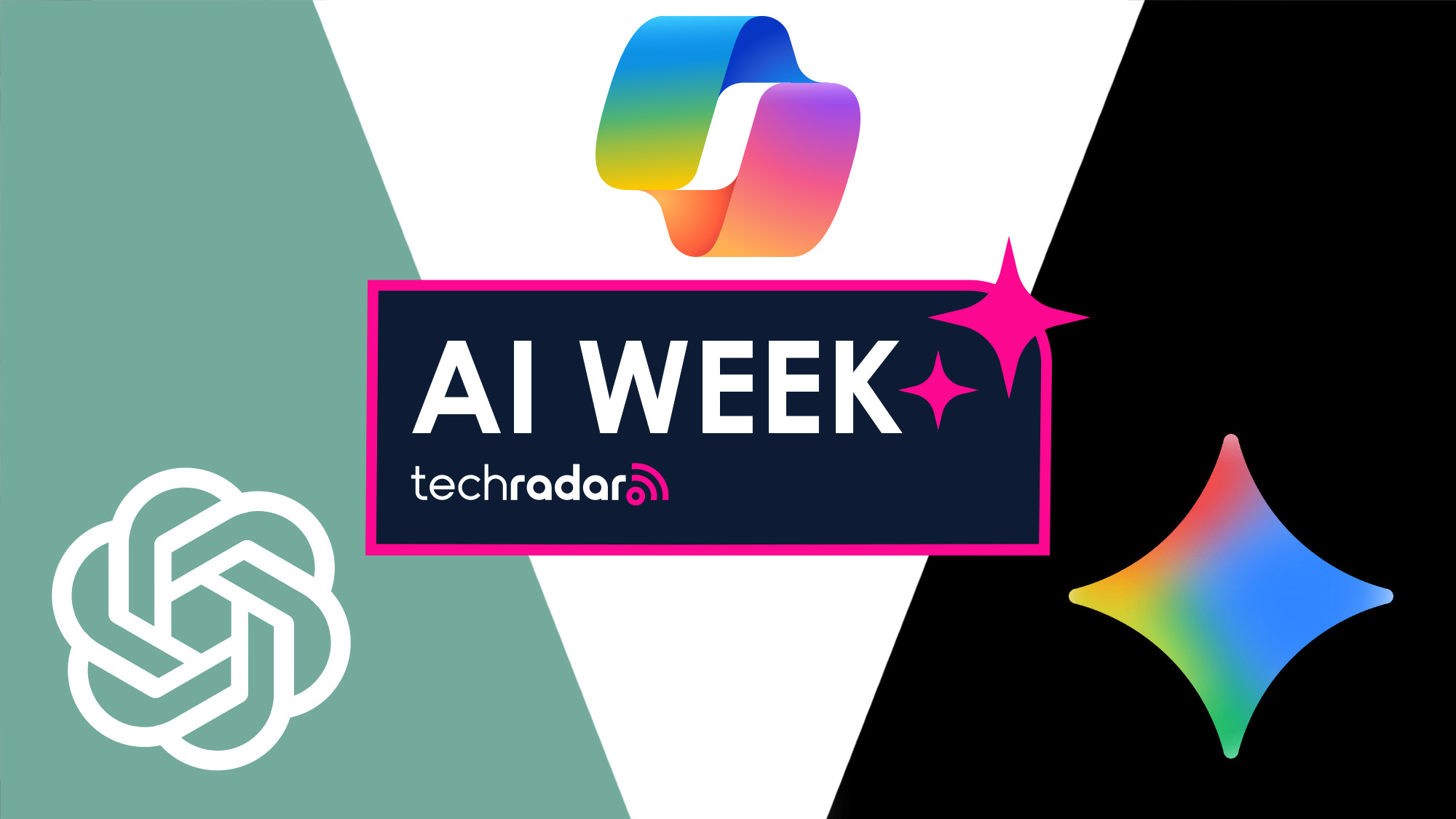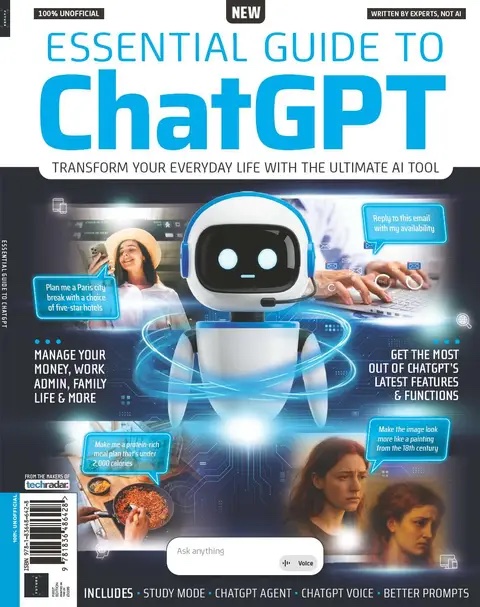Chatbots are no longer just a novelty – here’s how ChatGPT, Gemini, and Copilot are helping you get through the day
Helping people solve real problems, one chatbot at a time


This article is part of TechRadar's AI Week 2025. Covering the basics of artificial intelligence, we'll show you how to get the most from the likes of ChatGPT, Gemini, or Claude, alongside in-depth features, news, and the main talking points in the world of AI.
Artificial Intelligence has taken the world by storm. These days, it feels as though every product boasts some form of AI, from your smartphone to your fridge. Everything simply has to have it. You can even get a massage from an AI-powered robot if you really want to!
When people talk about AI, they are often referring to chatbots. These are the popular Large Language Models (LLMs) you can talk to, or that help you organise your thoughts, your life, and even your finances.
Not so long ago, AI chatbots were clunky conversationalists, and image generators were famous for giving people too many fingers or melting faces. But in just a few short years, they have improved so dramatically that it is becoming harder and harder to tell what is real and what is AI-generated. Some companies can now produce entirely synthetic videos that look convincingly real.
Most people use AI for rewriting or summarising text and solving problems, but another core feature of chatbots is their ability to translate languages. This can be very handy if you are travelling abroad.
Chatbots are also surprisingly useful for demystifying legal jargon, or for helping you understand what your doctor really means beneath all the medical terminology. They can even search the web, book plane tickets, and order more coffee when you are running low.
And let us not forget their role as companions. While no AI should replace a qualified professional, these tools can offer a sympathetic ear or quick advice when you are wrestling with a problem at work or in your personal life.
How does AI work?
LLMs can’t really ‘think’ in the way humans do, but they have been trained on so much human-created data – both words and images – that they can match patterns so well it appears as if they’re thinking just like a human.
Sign up for breaking news, reviews, opinion, top tech deals, and more.
While there are alternatives such as Google Gemini, Microsoft Copilot, Grok from X, Meta AI from Meta, and Claude (which has investment from Amazon), the most popular AI model by far is OpenAI’s ChatGPT. Although it has substantial investment from Microsoft, OpenAI remains an independent company and is leading much of the innovation in the field.
Which AI you prefer to use is often a matter of personal preference. Try them all out – most people end up sticking with the one they find easiest to talk to and most helpful.
The history of AI chatbots
It’s easy to forget that AI, at least in the form of chatbots, is still very young. ChatGPT-3.5, released in 2022, was the version that catapulted the technology into the public consciousness. With ChatGPT-4 – and its variations like 4o and 4o-mini – the chatbot took a real leap forward, especially when OpenAI added the ability to create images natively without relying on another app.
ChatGPT-generated images quickly went viral, particularly once people discovered it could mimic the style of Studio Ghibli, which drew in even more users.
The addition of web-search capability marked another major milestone for chatbots. Several surveys have shown that performing web searches is now the most common use for chatbots among the general public.
What can AI chatbots do?
The most recent version of ChatGPT (at the time of writing) is version 5, known as ChatGPT-5, released in August 2025. It’s an incredibly powerful AI that excels at writing code but can also handle the fun stuff in life, like ordering pizza or crafting a bedtime story for your kids.
GPT-5 comes in two main versions, depending on your ChatGPT account type: Fast and Thinking. There’s also a Pro version available to ChatGPT Pro subscribers.
Perhaps the most powerful feature of today’s chatbots is their ability to act as agents. ChatGPT’s Agent mode transforms it into your own personal assistant, capable of working in the background on tasks you assign while you get on with the rest of your day.
Copilot, Gemini, and GPT-5 are free to use, although paid versions unlock more advanced features – such as Agent mode – and offer higher usage limits. You can access all of these chatbots through mobile apps (for both iOS and Android), in a web browser, or via a desktop app for Mac and PC, provided your computer’s processor is powerful enough.
One of the most enjoyable features of chatbots is their voice interface. In ChatGPT, it’s called ChatGPT Voice; in Gemini, it’s Gemini Live. This lets you speak directly to the chatbot rather than type, creating a far more natural conversation. There’s also a range of voices to choose from, adding a bit of personality to your digital companion.
A word of caution

This article originally appeared as part of Essential Guide to ChatGPT, available now at MyFavoriteMagazines. Essential Guide to ChatGPT is full of top tips and expert advice, covering everything you need to know about the world’s most popular AI – from the basics to some of its latest features and functions.
All AIs occasionally get things wrong – and worse, sometimes make things up. It’s such a common phenomenon that it has its own name: hallucinations. In an effort to be helpful, an AI can sometimes invent facts that don’t exist, so you should never take everything it says at face value. They can also agree with whatever conclusion you reach, which can be misleading.
Generally speaking, chatbots are safe to use. AI companies take the issue of appropriate content seriously, so you’re extremely unlikely to encounter anything that shocks, endangers, offends, or frightens you. However, all AIs have age restrictions, and children should not use them unsupervised. For example, OpenAI states that “ChatGPT is not meant for children under 13, and we require that children ages 13 to 18 obtain parental consent before using ChatGPT.”
Using chatbots is usually an enjoyable and entertaining experience, and there’s so much waiting to be discovered. Once you get into the swing of integrating AI into your daily routine, you might start to wonder how you ever lived without it.
Follow TechRadar on Google News and add us as a preferred source to get our expert news, reviews, and opinion in your feeds. Make sure to click the Follow button!
And of course you can also follow TechRadar on TikTok for news, reviews, unboxings in video form, and get regular updates from us on WhatsApp too.

➡️ Read our full guide to the best business laptops
1. Best overall:
Dell Precision 5690
2. Best on a budget:
Acer Aspire 5
3. Best MacBook:
Apple MacBook Pro 14-inch (M4)

Graham is the Senior Editor for AI at TechRadar. With over 25 years of experience in both online and print journalism, Graham has worked for various market-leading tech brands including Computeractive, PC Pro, iMore, MacFormat, Mac|Life, Maximum PC, and more. He specializes in reporting on everything to do with AI and has appeared on BBC TV shows like BBC One Breakfast and on Radio 4 commenting on the latest trends in tech. Graham has an honors degree in Computer Science and spends his spare time podcasting and blogging.
You must confirm your public display name before commenting
Please logout and then login again, you will then be prompted to enter your display name.